Monday, October 7th 2019

AMD Introduces Radeon RX 5500 Series Graphics Cards
Today, AMD announced the Radeon RX 5500 series graphics products, harnessing groundbreaking RDNA gaming architecture to deliver the ultimate in high-performance, high-fidelity 1080p gaming. The AMD Radeon RX 5500 series includes the Radeon RX 5500 graphics card that will be available in desktop PCs from leading manufacturers and graphics cards from board partners, as well as the Radeon RX 5500M GPU for notebook PCs. Top system providers worldwide are embracing the new products, with HP and Lenovo planning to offer Radeon RX 5500 graphics cards in their high performance desktop gaming PCs beginning this November, and Acer planning to offer systems with the cards beginning this December. In addition, later this month MSI is expected to launch the world's first gaming notebook powered by AMD Ryzen processors and Radeon RX 5500M GPUs.
"Based on feedback and insights from global gaming communities, gamers rank graphics as the most critical component for speed and performance," said Johnson Jia, senior vice president and general manager, Consumer Business of Intelligent Devices Group, Lenovo. "That's why the Lenovo Legion T730 and T530 gaming towers and the IdeaCentre T540 Gaming desktop pack in AMD's latest Radeon RX graphics - satisfying players' need for high-fidelity visuals and lightning-fast frame-rates to fully immerse into their gameplay." "MSI Alpha 15 is a new chapter for us, and we're excited to partner with AMD to combine the latest 7 nm technology found in the Radeon RX 5500M GPU and MSI's gaming DNA for our gamers," said Charles Chiang, CEO of MSI.With the newest additions to the Radeon family, AMD is bringing its advanced RDNA gaming architecture and industry-leading 7 nm process technology to legions of mainstream gamers worldwide in exciting new form factors and systems. Powered by RDNA, the Radeon RX 5500 provides up to 1.6X higher gaming performance-per-watt than current Radeon graphics cards based on the Graphics Core Next (GCN) architecture.
The AMD Radeon RX 5500 series was built from the ground up to deliver incredible 1080p gaming, high-fidelity visuals and ultra-responsive gameplay. Optimized to deliver incredible experiences on the hottest games, the Radeon RX 5500 graphics card provides up to 37 percent faster performance on average than the competitive product in select titles at 1080p1. For mobile gaming, a laptop configured with the Radeon RX 5500M GPU provides up to 30 percent faster performance on average than the competition, and delivers up to 60+ FPS in select AAA titles and up to 90+ FPS in select eSports games.
"It's been incredible to see the response to our RDNA architecture from gamers worldwide, and now we're bringing the same high-framerate, dynamic gameplay and advanced features to 1080p gaming with the Radeon RX 5500 series," said Scott Herkelman, corporate vice president and general manager, Radeon Technologies Group at AMD. "AMD is committed to delivering incredible gaming experiences to all gamers across all price-points. Whether fighting the Calypso twins in Borderlands 3 or battling to take back Auroa in Tom Clancy's Ghost Recon Breakpoint, the Radeon RX 5500 series allows every gamer to feel fully immersed and lose themselves in these beautiful and complex worlds."
Built on industry-leading 7 nm process technology and supporting high-bandwidth PCIe 4.0 technology, the new AMD Radeon products take advantage of powerful features to bring 1080p gameplay to the next level, including:
The new Radeon RX 5500 series are included in the latest AMD Radeon Raise the Game bundle, offering gamers their choice of Borderlands 3 or Tom Clancy's Ghost Recon Breakpoint with the purchase of eligible pre-configured desktop and notebook systems powered by Radeon RX 5500 and RX 5500M graphics. Learn more here.
Availability
Later this month, MSI is expected to launch the MSI Alpha 15 laptop, powered by Radeon RX 5500M GPUs. In addition, Radeon RX 5500 graphics cards are expected to be available in leading desktop gaming systems beginning in November 2019, including HP'S OMEN Obelisk and Pavilion Gaming desktops, as well as Lenovo Legion T530 and IdeaCentre T540 Gaming PCs. The Radeon RX 5500 graphics cards are expected to be available in Acer Nitro 50 PCs beginning in December 2019. AMD board partners are expected to launch standalone graphics cards this quarter (Q4 2019).For more information, visit the product page.
The slide deck follows.
"Based on feedback and insights from global gaming communities, gamers rank graphics as the most critical component for speed and performance," said Johnson Jia, senior vice president and general manager, Consumer Business of Intelligent Devices Group, Lenovo. "That's why the Lenovo Legion T730 and T530 gaming towers and the IdeaCentre T540 Gaming desktop pack in AMD's latest Radeon RX graphics - satisfying players' need for high-fidelity visuals and lightning-fast frame-rates to fully immerse into their gameplay." "MSI Alpha 15 is a new chapter for us, and we're excited to partner with AMD to combine the latest 7 nm technology found in the Radeon RX 5500M GPU and MSI's gaming DNA for our gamers," said Charles Chiang, CEO of MSI.With the newest additions to the Radeon family, AMD is bringing its advanced RDNA gaming architecture and industry-leading 7 nm process technology to legions of mainstream gamers worldwide in exciting new form factors and systems. Powered by RDNA, the Radeon RX 5500 provides up to 1.6X higher gaming performance-per-watt than current Radeon graphics cards based on the Graphics Core Next (GCN) architecture.
The AMD Radeon RX 5500 series was built from the ground up to deliver incredible 1080p gaming, high-fidelity visuals and ultra-responsive gameplay. Optimized to deliver incredible experiences on the hottest games, the Radeon RX 5500 graphics card provides up to 37 percent faster performance on average than the competitive product in select titles at 1080p1. For mobile gaming, a laptop configured with the Radeon RX 5500M GPU provides up to 30 percent faster performance on average than the competition, and delivers up to 60+ FPS in select AAA titles and up to 90+ FPS in select eSports games.
"It's been incredible to see the response to our RDNA architecture from gamers worldwide, and now we're bringing the same high-framerate, dynamic gameplay and advanced features to 1080p gaming with the Radeon RX 5500 series," said Scott Herkelman, corporate vice president and general manager, Radeon Technologies Group at AMD. "AMD is committed to delivering incredible gaming experiences to all gamers across all price-points. Whether fighting the Calypso twins in Borderlands 3 or battling to take back Auroa in Tom Clancy's Ghost Recon Breakpoint, the Radeon RX 5500 series allows every gamer to feel fully immersed and lose themselves in these beautiful and complex worlds."
Built on industry-leading 7 nm process technology and supporting high-bandwidth PCIe 4.0 technology, the new AMD Radeon products take advantage of powerful features to bring 1080p gameplay to the next level, including:
- Radeon Image Sharpening (RIS) - Brings crispness and clarity to in-game visuals that have been softened by upscaling and post-process effects in DirectX 9, 12 and Vulkan titles. When paired with Radeon GPU upscaling, RIS enables sharp visuals and fluid frame rates on high-resolution displays.
- AMD FidelityFX - Offers an open-source toolkit for game developers to add high-quality post-process effects to help make games look beautiful while offering the optimal balance of visual fidelity and performance. Available on GPUOpen, FidelityFX features Contrast-Adaptive Sharpening (CAS), which draws out detail in low-contrast areas while minimizing artifacts caused by typical image sharpening routines.
- Radeon Anti-Lag - Anti-Lag significantly decreases input-to-display response times, including making Borderlands 3 up to 23 percent more responsive with Radeon RX 5500 series graphics and offering a competitive edge in gameplay.
- Largest gaming display ecosystem - With over 950 supported monitors to choose from, gamers can enjoy stutter-free, tear-free gameplay with AMD Radeon FreeSync and Radeon FreeSync 2 HDR technology.
The new Radeon RX 5500 series are included in the latest AMD Radeon Raise the Game bundle, offering gamers their choice of Borderlands 3 or Tom Clancy's Ghost Recon Breakpoint with the purchase of eligible pre-configured desktop and notebook systems powered by Radeon RX 5500 and RX 5500M graphics. Learn more here.
Availability
Later this month, MSI is expected to launch the MSI Alpha 15 laptop, powered by Radeon RX 5500M GPUs. In addition, Radeon RX 5500 graphics cards are expected to be available in leading desktop gaming systems beginning in November 2019, including HP'S OMEN Obelisk and Pavilion Gaming desktops, as well as Lenovo Legion T530 and IdeaCentre T540 Gaming PCs. The Radeon RX 5500 graphics cards are expected to be available in Acer Nitro 50 PCs beginning in December 2019. AMD board partners are expected to launch standalone graphics cards this quarter (Q4 2019).For more information, visit the product page.
The slide deck follows.
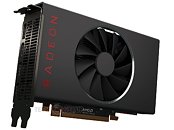
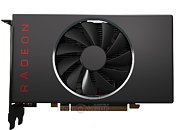
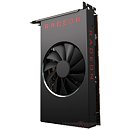
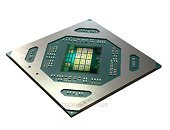
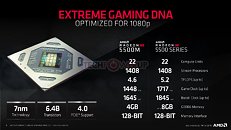
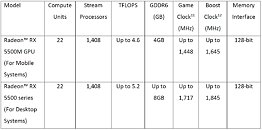
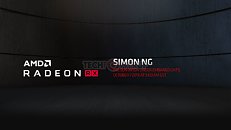
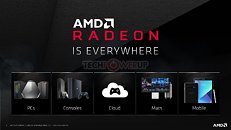
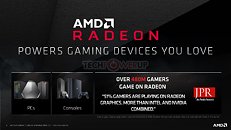
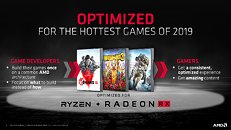
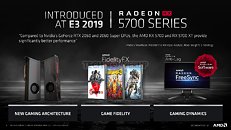

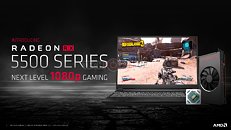
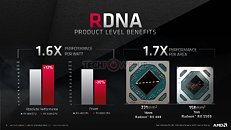
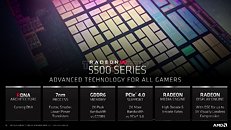
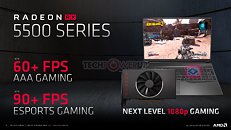

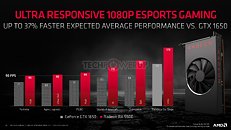
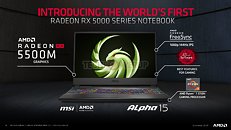
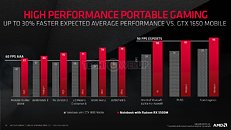

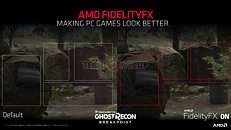

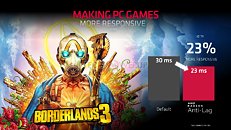


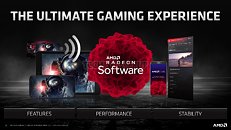

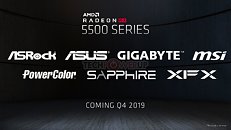
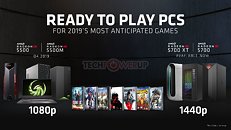
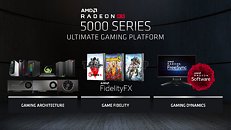

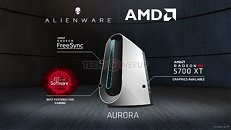
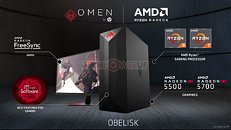
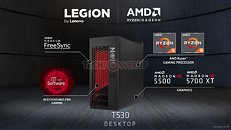
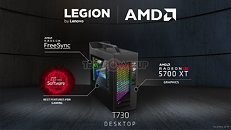
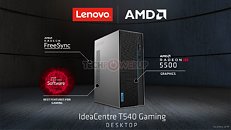
64 Comments on AMD Introduces Radeon RX 5500 Series Graphics Cards
EDIT: After some digging it looks like these might go even cheaper potentially down to $149.
... really?
And...MSI launching an AMD laptop?! :eek:
Things must REALLY not be rosy with Intel if MSI is actually testing a laptop offering with AMD.
Woooo? So much advancement....I think? I mean, go look at the 1650 benchmarks from when it came out. Take note of where the RX570 and RX580 are at. This new RX5500 isnt any faster. Poeple complain about nvidia all the time, but AMD seems to be very comfortable not moving an inch from where polaris once stood, and if this is the best they can shrink Navi down to, big navi doesnt look so rosy anymore.That isnt exactly unusual. MSI has made AMD gaming laptops, the FX line, for many years. They even made them with bulldozer APUs and AMD dGPUs!
They compare it to a 1650, but it's much faster on average. The performance slots it between RX590 and GTX1660. The price will most likely be there as well.
It would be amazing if they price it at ~$160, don't get me wrong, but I'm skeptical at the moment.This is not a 580 replacement.
This would be a replacement for a hypothetical AMD card sitting between RX460 and RX470 in terms of performance (a 1050Ti slots around there).
www.amd.com/en/products/graphics/amd-radeon-rx-5500
www.amd.com/en/products/graphics/radeon-rx-580
Haha, where do you think we are, the real world?
If the 5500 is a 110 watt card, why, pray tell, does it need an 8 pin connector? That suggests it isnt anywhere close to 110 watts. Anandtech was told during press breifing that the card would be 150 watt, now they've changed their slides to say 110 watt. I'd guess AMD didnt get a very good reception to those numbers and is fudging something.
www.techpowerup.com/review/asrock-radeon-rx-5700-xt-taichi-oc-plus/30.html
Peak 5700 power is 183 W which is inline with 185 W from AMD. Peak 5700 XT power is 223 W which is inline with 225 W from AMD. Average power is slightly lower so I expect the 5500 to be around 100 W average and 110 W peak. Expectations must be reset with Navi and 7 nm. The previous info on Vega and Polaris power usage is no longer valid.
Edit: And you are right about Vega and Polaris being higher than what AMD advertised. Techpowerup finds the peak 580 power to be 219 W from that same review linked above. Now that this is no longer the case for Navi, then the 5500 is exactly half the power of the 580.
See above, Anandtech was breifed for 150 watt, then the slides say 110 watt. So why is AMD changing the story on the fly? Smells a little fishy. My point is that AMD has been less then truthful on their power usage before, and there is little reason right now to believe the 5500 is going to stick to their powerpoint slides.
The mid level (RTX2070) card to be about 350 - 400 - 450.
The high level (RTX2080) card to be about 600 dollar.
The ultra high end (RTX2080Ti) card to be about 750 dollar.
ya know.... like it used to be before the rediculous price jumps.
Entry x30 ~ sub $100(Not really gaming card)
Nvidia's usual msrp ranges for Gaming cards:
- Low end x50/ti ~$100 - $150
- Midrange x60/ti ~$200 - $299
- High end x70/x80 ~$330 - $600
- Enthusiast x80ti ~ $650 - $750
So by the pricing current Turing stack up:Saying the 2080ti is a Titan class card is the dumbest thing I have heard in a while.
It doesn't have any of the software features and support the Titans get, it is a very expensive enthusaist gaming card and that is all it is.